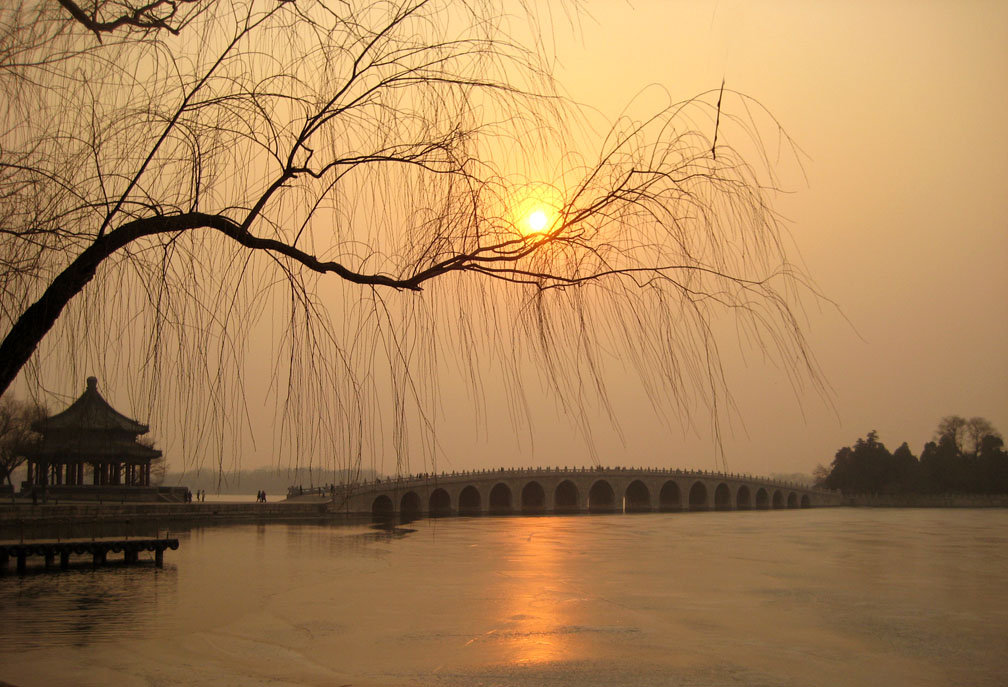
click on all photos to enlarge
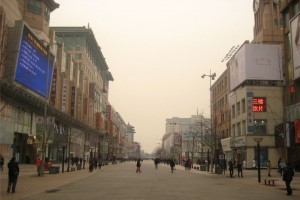 We disembarked the plane after an overnight flight and welcomed the newest leg of our wander. The early morning freeze pinched my sunblock soaked skin and the low humidity levels cracked my lingering sunburn.
We disembarked the plane after an overnight flight and welcomed the newest leg of our wander. The early morning freeze pinched my sunblock soaked skin and the low humidity levels cracked my lingering sunburn. 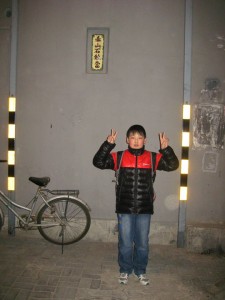 Dressed as if I was still on the beaches of Australia, the dude and I entered our new environment, our new culture and the awaiting explorations of Beijing, China.
Dressed as if I was still on the beaches of Australia, the dude and I entered our new environment, our new culture and the awaiting explorations of Beijing, China.
The subway ride into the heart of downtown Beijing was like Oxygen traveling through the lungs of a life-long smoker. Smashed up against windows and squeezed through barely visible gaps, we managed our bags and followed our maps as the train, swollen with peak hour 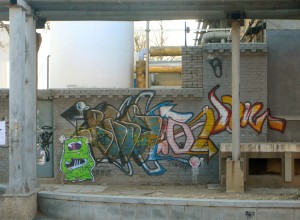 subway commuters, sped along the underground maze of Beijing. The train screeched to a halt and the train birthed us out onto the Dongsi Subway Station platform. Beijing awaited just overhead at the end of a series of staircases and escalators.
subway commuters, sped along the underground maze of Beijing. The train screeched to a halt and the train birthed us out onto the Dongsi Subway Station platform. Beijing awaited just overhead at the end of a series of staircases and escalators.
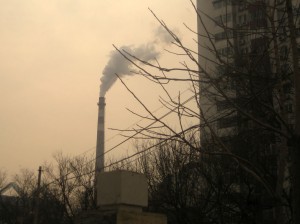 My first step onto the streets high above the subway was greeted with a chill and dry 5am wind. The sun was up somewhere, but hidden behind a thick blanket of cloud and smog. The streets animated with cars, bikes and scooters and the air was just as congested with disorganized honks.
My first step onto the streets high above the subway was greeted with a chill and dry 5am wind. The sun was up somewhere, but hidden behind a thick blanket of cloud and smog. The streets animated with cars, bikes and scooters and the air was just as congested with disorganized honks.
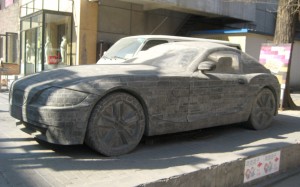 To the eye, it looked like the urban landscape had been wiped with a rag dipped in the murky waters of painter’s wash jar. The streets, sky, buildings and leafless trees all lacked color. Any direction, when
To the eye, it looked like the urban landscape had been wiped with a rag dipped in the murky waters of painter’s wash jar. The streets, sky, buildings and leafless trees all lacked color. Any direction, when 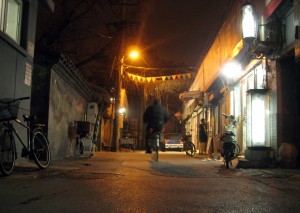 eyes squinted, looked like a solid wall of gray, dotted with the occasional red from signage and street decorations.
eyes squinted, looked like a solid wall of gray, dotted with the occasional red from signage and street decorations.
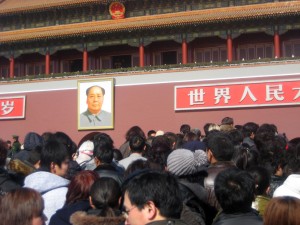 After checking into the Fly by Knight Courtyard Hostel, we jumped straight back into the streets and found Tiananmen Square, a large city square located in the center, most widely known for the infamous Tiananmen Square protests of 1989 and the resulting Tank Man
After checking into the Fly by Knight Courtyard Hostel, we jumped straight back into the streets and found Tiananmen Square, a large city square located in the center, most widely known for the infamous Tiananmen Square protests of 1989 and the resulting Tank Man 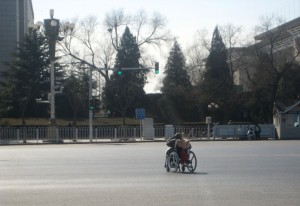 incident. Cameras affixed to steadfast poles scattered across the square as a predominant Chinese crowd walked aimlessly in the open space. A large portrait of Mao Zedong, the first chairman of the People’s Republic of China (PRC), looks over
incident. Cameras affixed to steadfast poles scattered across the square as a predominant Chinese crowd walked aimlessly in the open space. A large portrait of Mao Zedong, the first chairman of the People’s Republic of China (PRC), looks over 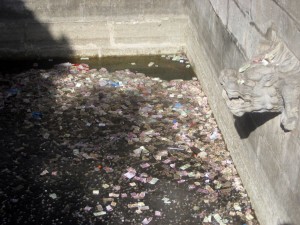 the square’s visitors and opposite the portrait is the Mao Zedong Memorial Hall where Mao’s remains are located, as well as the supposed preserved face visible to visitors.
the square’s visitors and opposite the portrait is the Mao Zedong Memorial Hall where Mao’s remains are located, as well as the supposed preserved face visible to visitors.
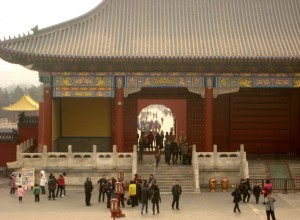 Room after identical room of the many temples and palaces welcome visitors for a small fee and the surrounding areas animate with manufactured scams including fake Jade, fake Rolex watches and locals inviting
Room after identical room of the many temples and palaces welcome visitors for a small fee and the surrounding areas animate with manufactured scams including fake Jade, fake Rolex watches and locals inviting 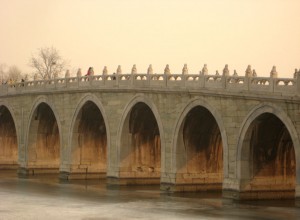 to fake “art shows” and “tea parties”. The charm of the historical sites are apparent, but the surge of capitalism dominates.
to fake “art shows” and “tea parties”. The charm of the historical sites are apparent, but the surge of capitalism dominates.
After a few days of wandering the streets where signal lights are ignored, crossing the street is like playing Frogger and honks replace blinkers, and eating critters from side 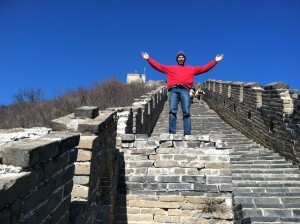 alley stands, it was time to visit the Great Wall. A taxi picked up Jeff and me, along with some fellow hostel mates, and weaved in and out of oncoming traffic in route for the base of the wall. From the base we took a lift to the wall where we were met by blue skies and the first
alley stands, it was time to visit the Great Wall. A taxi picked up Jeff and me, along with some fellow hostel mates, and weaved in and out of oncoming traffic in route for the base of the wall. From the base we took a lift to the wall where we were met by blue skies and the first 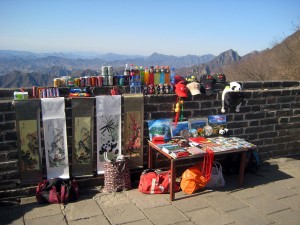 breath of fairly clean air in days.
breath of fairly clean air in days.
The wall leads you up distant mountains, scattered with lookout towers and merchandise slanging Chinese ready to sell anything from a Snickers candy bars to a Red Bull. The strength and manpower 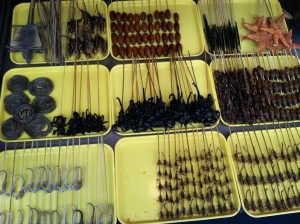 necessary to not only build, but to carry the stone up the mountains, is unbelievable. Views of The Wall vanish in the distance and a frozen village awakens to the day at the mountain base.
necessary to not only build, but to carry the stone up the mountains, is unbelievable. Views of The Wall vanish in the distance and a frozen village awakens to the day at the mountain base.
Coming from Summertime in Australia, Beijing was an adjustment. The air was dense with pollution, the ground was covered in spit and the sites frenzied with capitalism, but to compare it to any other land is unfair. The impressive palaces and temples are architectural wonders; the history is a dramatic read. For a traveler who seeks out the underbelly of a community, it is a masterpiece. For those less about poolside etiquette, it is an adventure. To sum up Beijing, it was VERY interesting… and that makes it a masterpiece.
Click HERE to leave a comment!
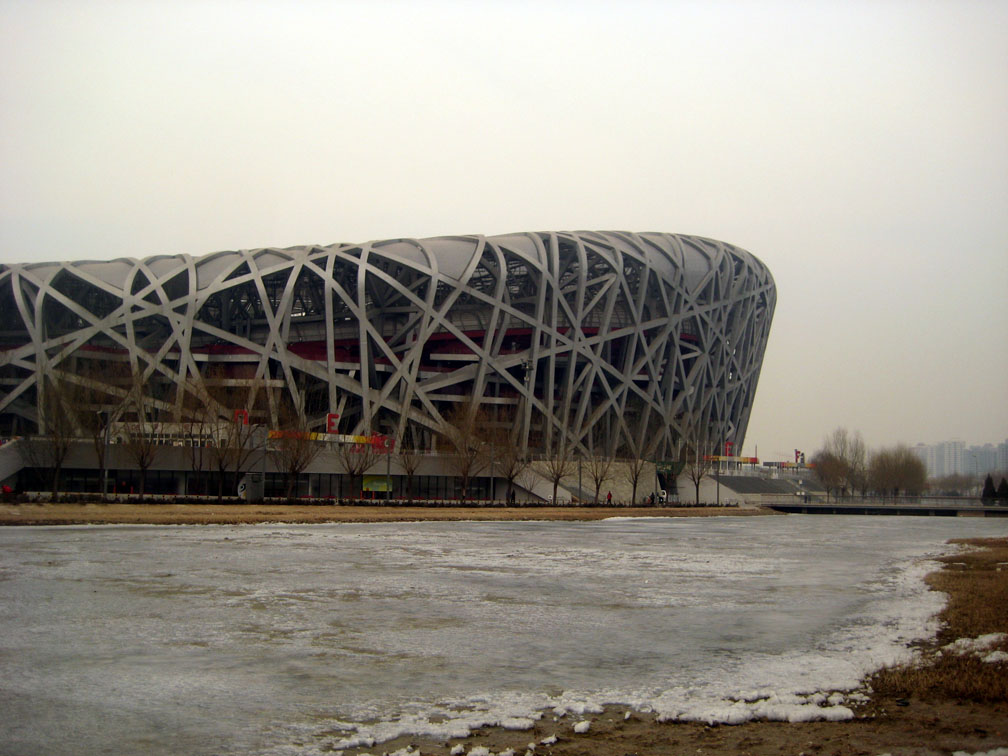

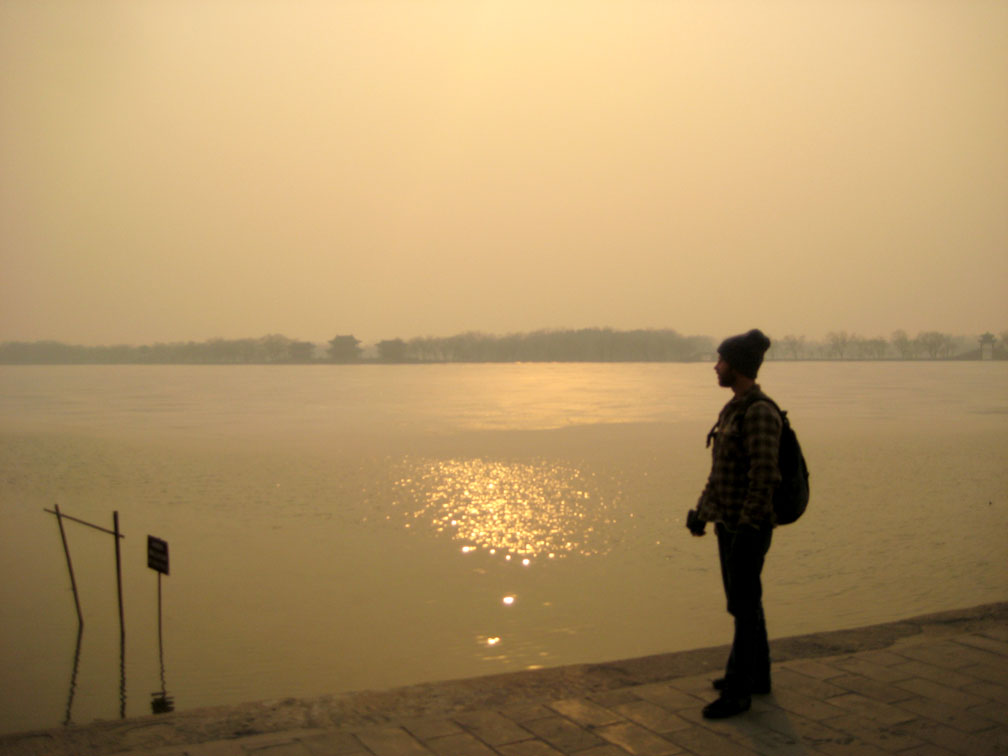



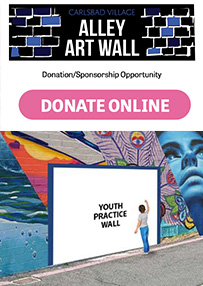



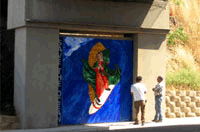
Recent Comments